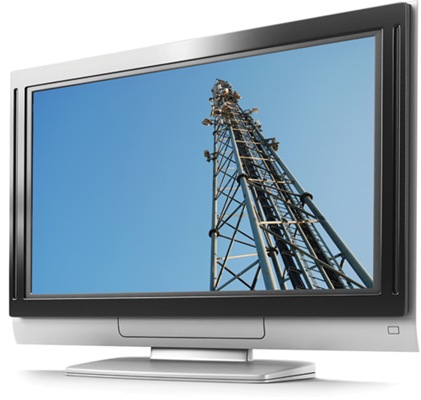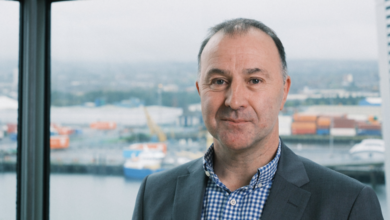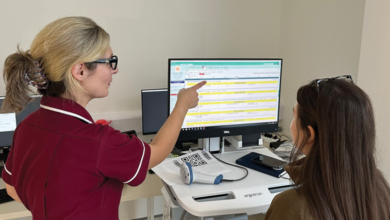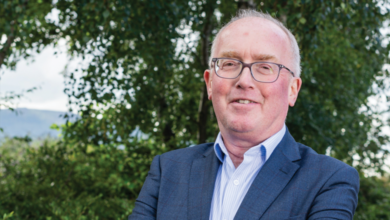Going digital
Ryan Jennings looks at the problems expected as we go digital.
Television across the UK has been going digital since 2008. We haven’t heard much about it here but three regions have already fully made the change. The Borders, the North West and the West Country (taking in Cornwall) all made the change before the start of the year.
The change is essentially to alter the way the TV signal is broadcast throughout the UK. Northern Ireland will be the last to go digital as part of an EU-wide Directive, passed in December 2007.
The changeover will see the transmitters broadcasting a digital signal only from 2012, meaning that all viewers will need a digitally compatible TV to receive any channels. At the moment, Digital UK estimates that around one in four households cannot get a full range of digital services. Even more interestingly, one in five cannot even receive Channel 5.
agendaNi understands that at the outset there was significant engineering work to be carried out on the three transmitters in the province, stationed in Limavady, Divis and Brougher Mountain.
A Digital UK spokesman told agendaNi that work has started on the construction of a new TV mast at Divis. It is expected to be finished by the summer. Subsequent engineering work will continue through 2011 into 2012.
Engineers are also due to start work to upgrade the Brougher Mountain and Limavady transmitter groups in the spring.
Each ‘group’ of transmitters consists of a main transmitter and three ‘relays’, which bounce the signal from the main transmitter to outer-lying areas. Homes which only receive a signal from the relay transmitter are those which currently cannot receive digital television, including channels such as BBC 3 and 4, E4 and More4.
These changes, he said, will make sure that following the switchover, 98 per cent of households in the province will be able to receive freeview digital TV. That means that 2 per cent will have to or have had to seek a different way to receive digital television. In other words, since a digital signal is meant to replicate the analogue signal, if a house was not able to receive an analogue signal before the changeover, it will still not be able to receive the new digital.
The spokesman did point out, though, that anyone in that situation would have by and large already sorted themselves out by using satellite TV.
Northern Ireland, of course, is the only part of the UK that shares a physical border with another jurisdiction and cross-border interference also added to the complexities given the out-dated infrastructure in the province.
Since broadcasting has not been devolved to Northern Ireland, the Department for Culture, Media and Sport still takes the lead. It says that the switchover will make broadcasting “fairer” as it gives more people more choice.
Or will it? Viewers in the North who are currently able to watch RTÉ do so because they are picking up its analogue signal via an overspill. They will continue to be able to tune into Fair City or Magners League rugby as usual even when Northern Ireland has made the change, as long as the Republic’s analogue signal continues.
But, since the Republic is due for a switch in the same year, its analogue signal will be switched off on a date not yet known. It will be set by the Irish Communications Minister.
When the switch is made in the South, the signal will be sent out on the MPEG 4 frequency. MPEG 2 will cover Northern Ireland, thus all digital TVs and digital TV receivers in the North will only pick up the latter, leaving northern viewers out of the southern loop.
To continue receiving an RTÉ signal, the Department for Communication, Energy and Natural Resources told agendaNi, viewers will most likely have to invest in a crossborder digital receiver.
It also expects there to be a co-ordinated approach to the analogue switch off. Discussions are described as “on-going” between the two governments. A memorandum of understanding between the two governments was published in early February which commits both to “facilitating the widespread availability of RTÉ services in Northern Ireland and BBC services in Ireland on a free-to-air basis”, as well as ensuring the Irish language channel TG4 continues to be available in the North after the switchover.
While the ushering in of the digital age can be seen as simply embracing technology, there is also a practical reason for it. A digital signal is compressed, meaning that it takes up much less space on the airwaves, freeing up room for advances such as high definition technology. agendaNi understands that some of that free space will also auctioned off to private interests for services such as mobile broadband.
Most TVs can be adapted by connecting a digital box, which will receive the digital frequency, or most new TVs are fitted with a digital receiver built-in. But it will not necessarily stop there. Between two and 10 per cent of household will likely have to install a new digital aerial to receive the signal.
Those people aged 75 or over, claim DLA, attendance allowance or constant attendance allowance or are partially sighted or blind will be eligible for a help scheme.
While 89 per cent of households in Northern Ireland are already equipped with some form of digital television, the main thrust of the digital debate will be towards that 11 per cent without the service.
While simply fitting a freeview box should do the trick, satellite and cable television, along with internet provided TV will remain as strong alternative.
- 89 per cent of households already have one digital TV
- 10 maximum per cent of people who will need a new digital aerial
- 98 will have access to all freeview services after the switch
- 11 per cent only get terrestrial TV
- 2 per cent will only have limited freeview after the switch
The switchover timeline
- 19 December 2007 – EU Directive passed
- 22 July 2009 – Borders region
- 9 September 2009 – West Country
- 2 December 2009 – Granada
- 24 March 2010 – Wales, West
- 5 May 2010 – STV North
- October 2010 – STV Central
- 17 November 2010 – Channel Islands
- 2011 – Central, Yorkshire, Anglia
- 2012 – Meridian, London, Tyne Tees, Northern Ireland
Granada includes northwest England and Meridian covers south coast of England.






